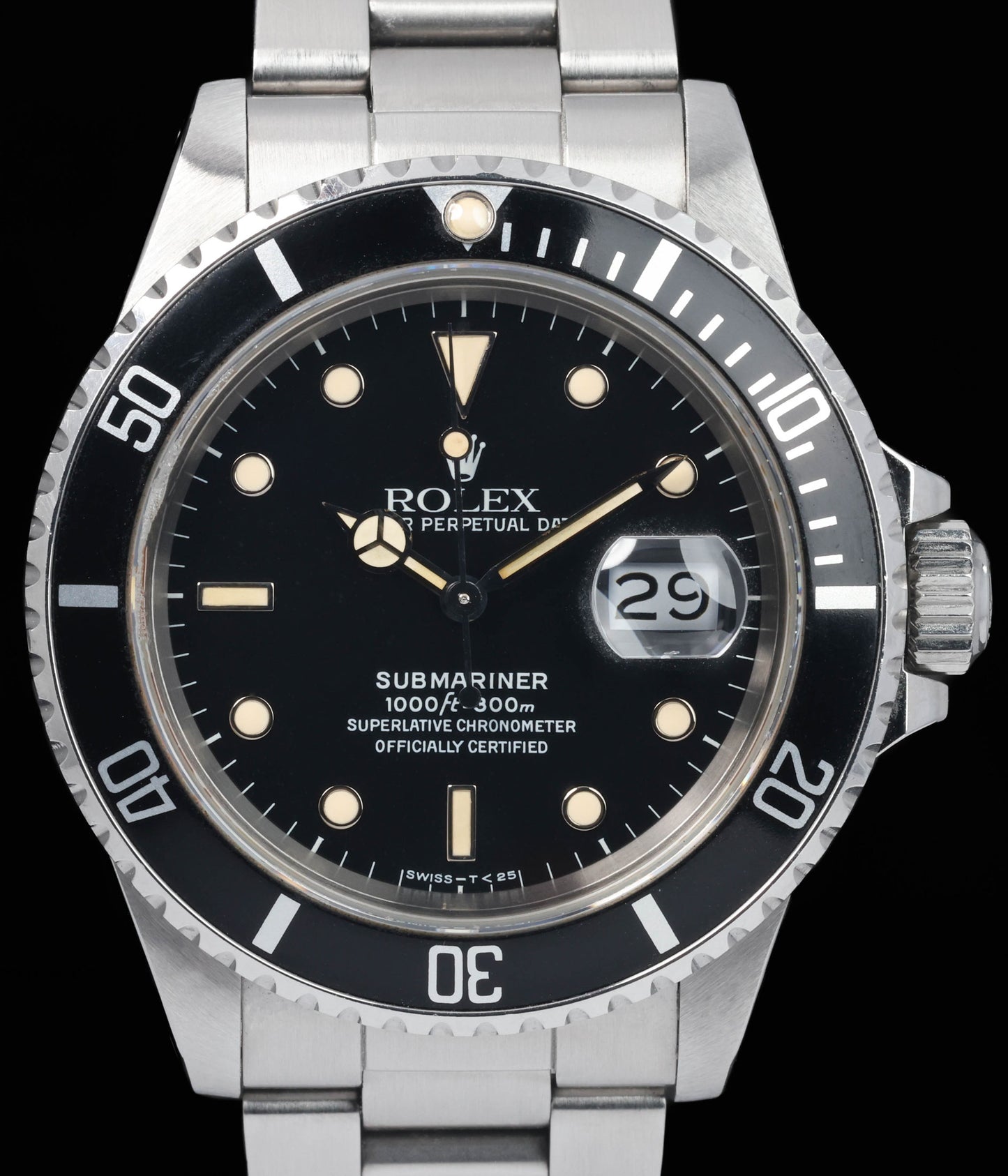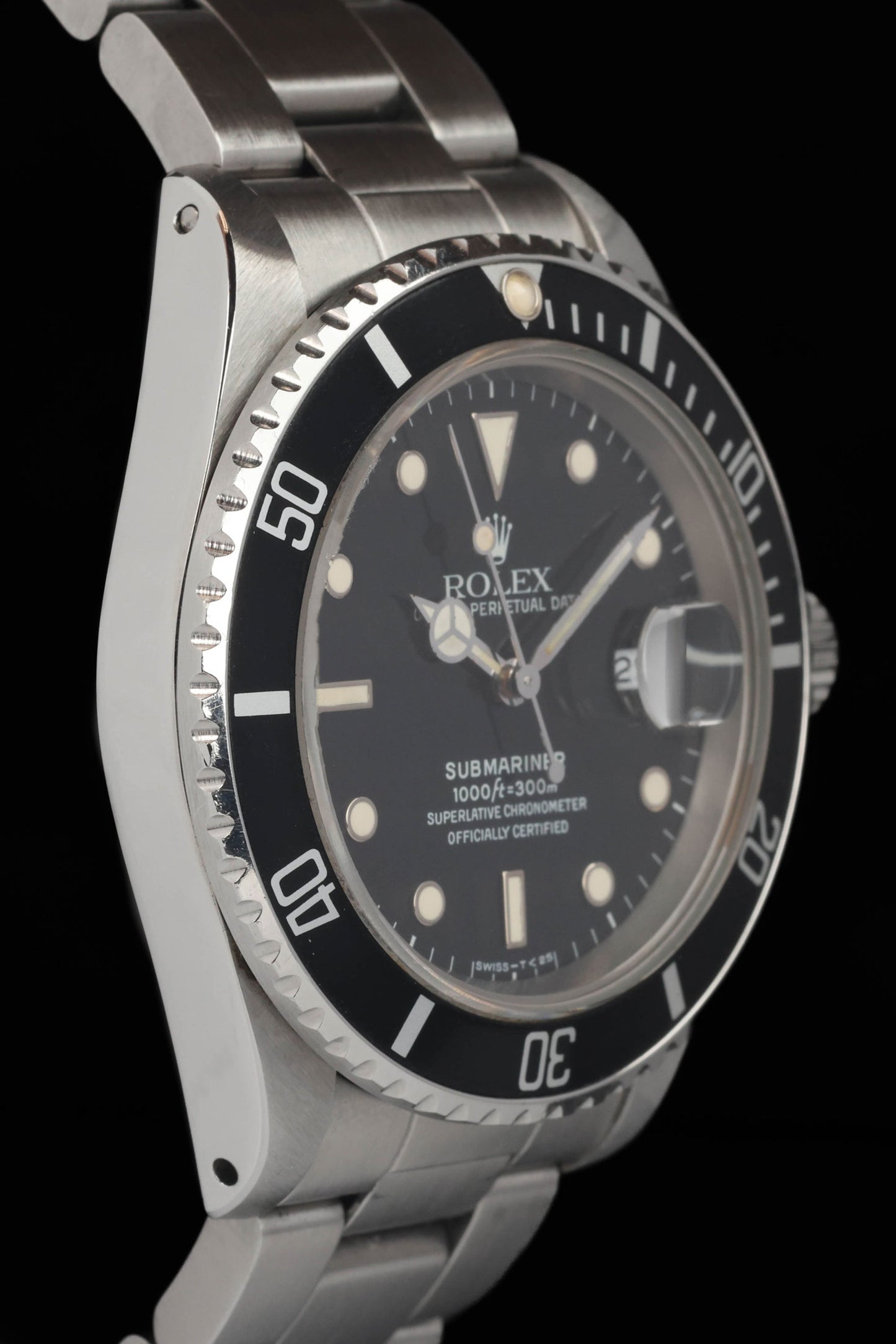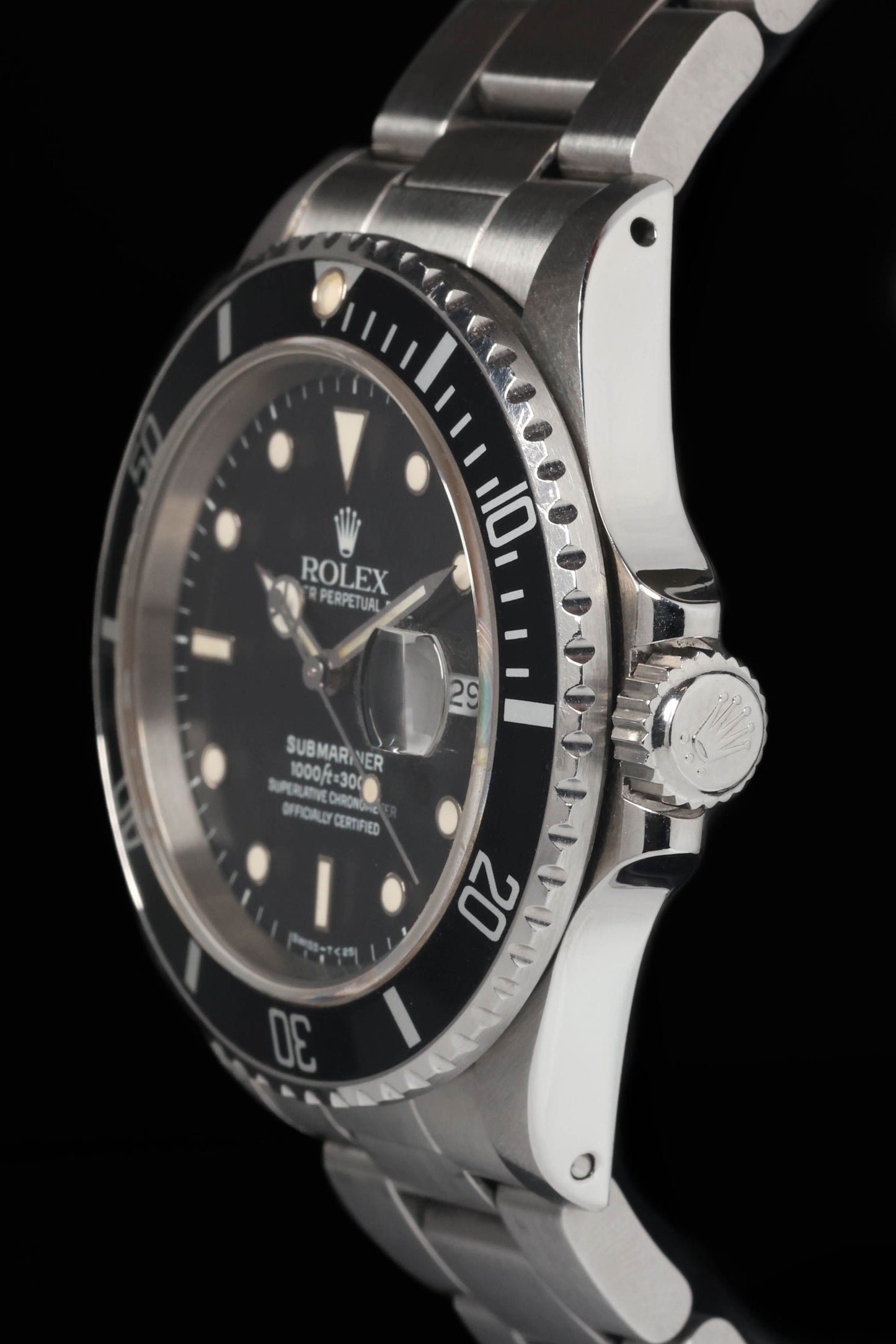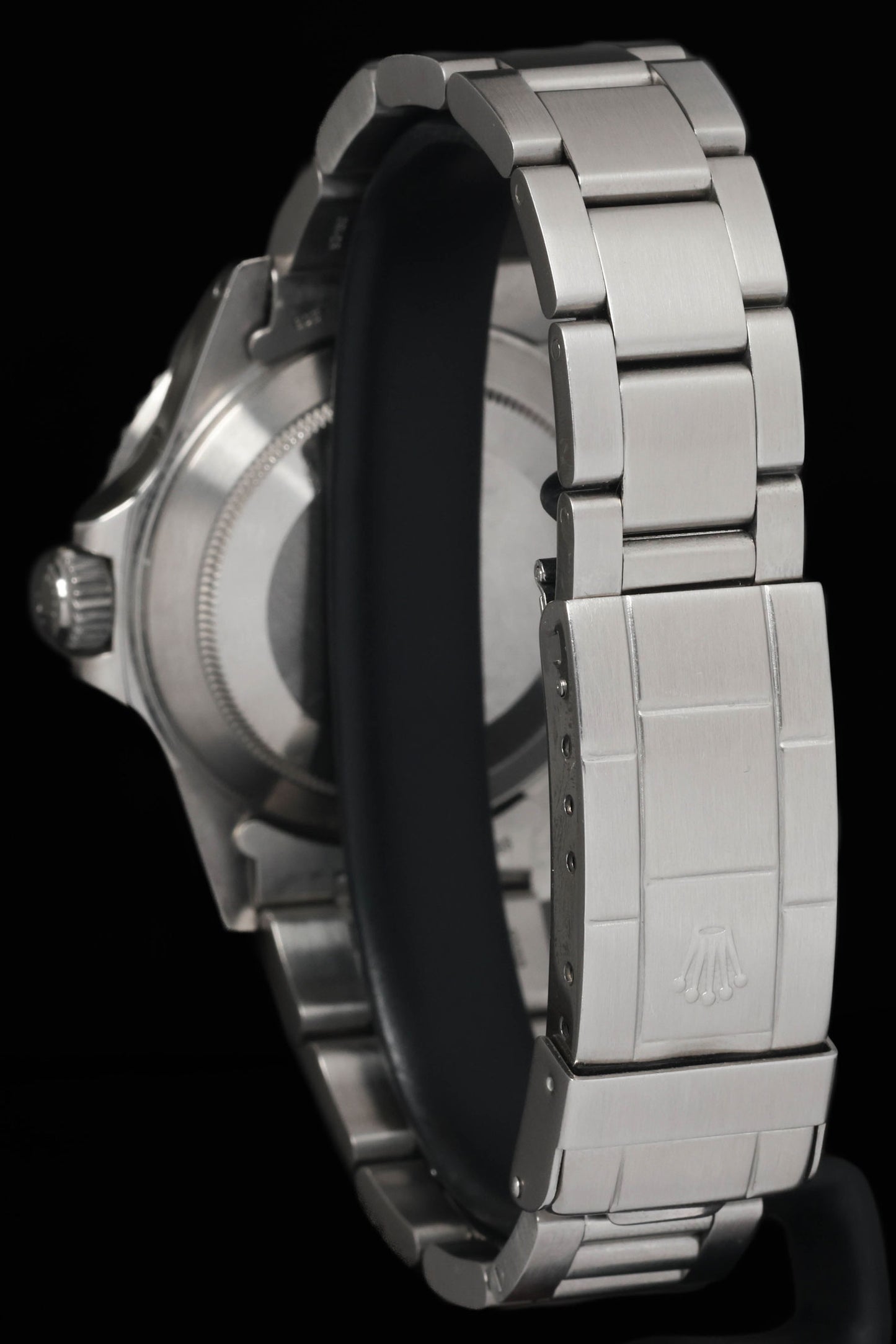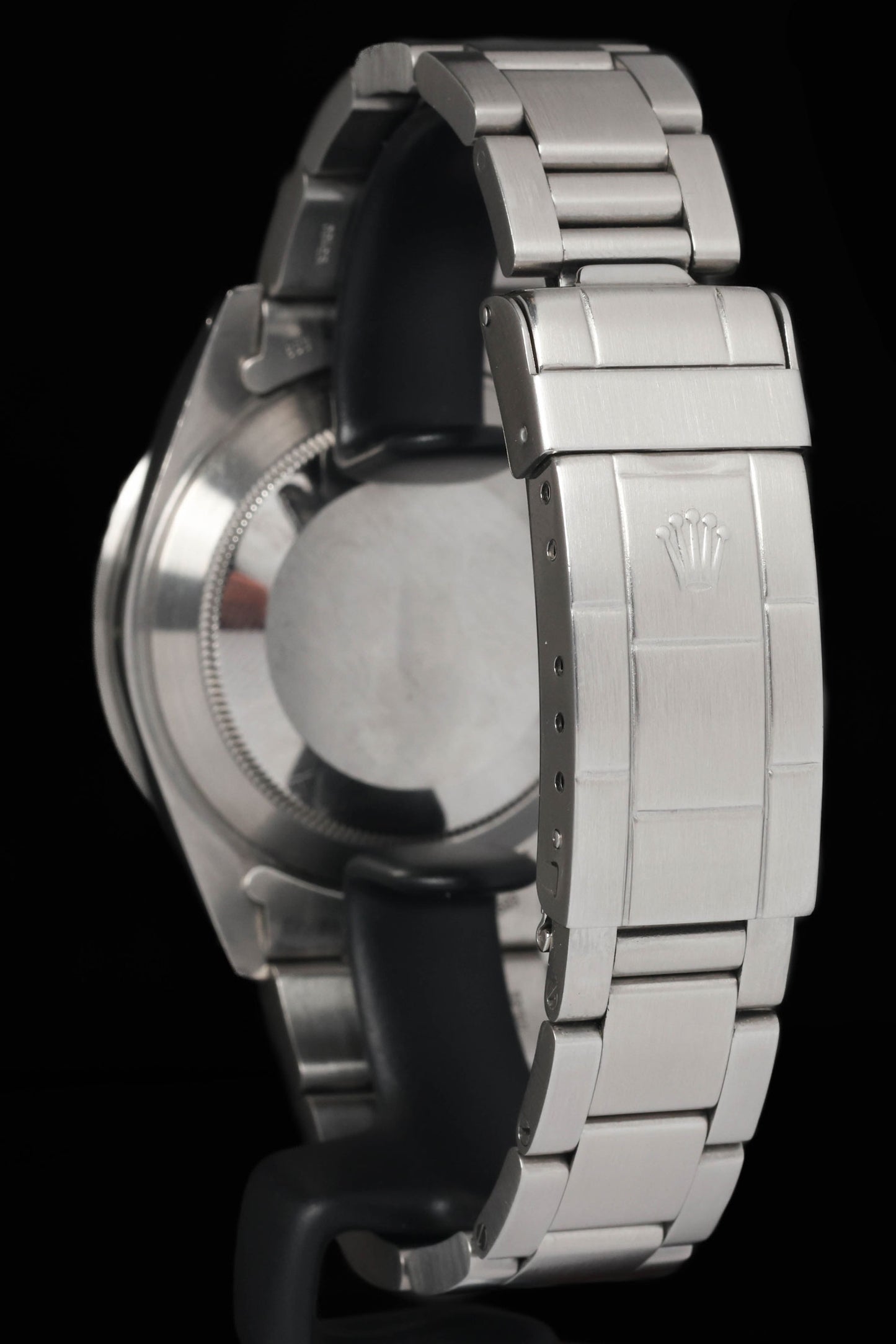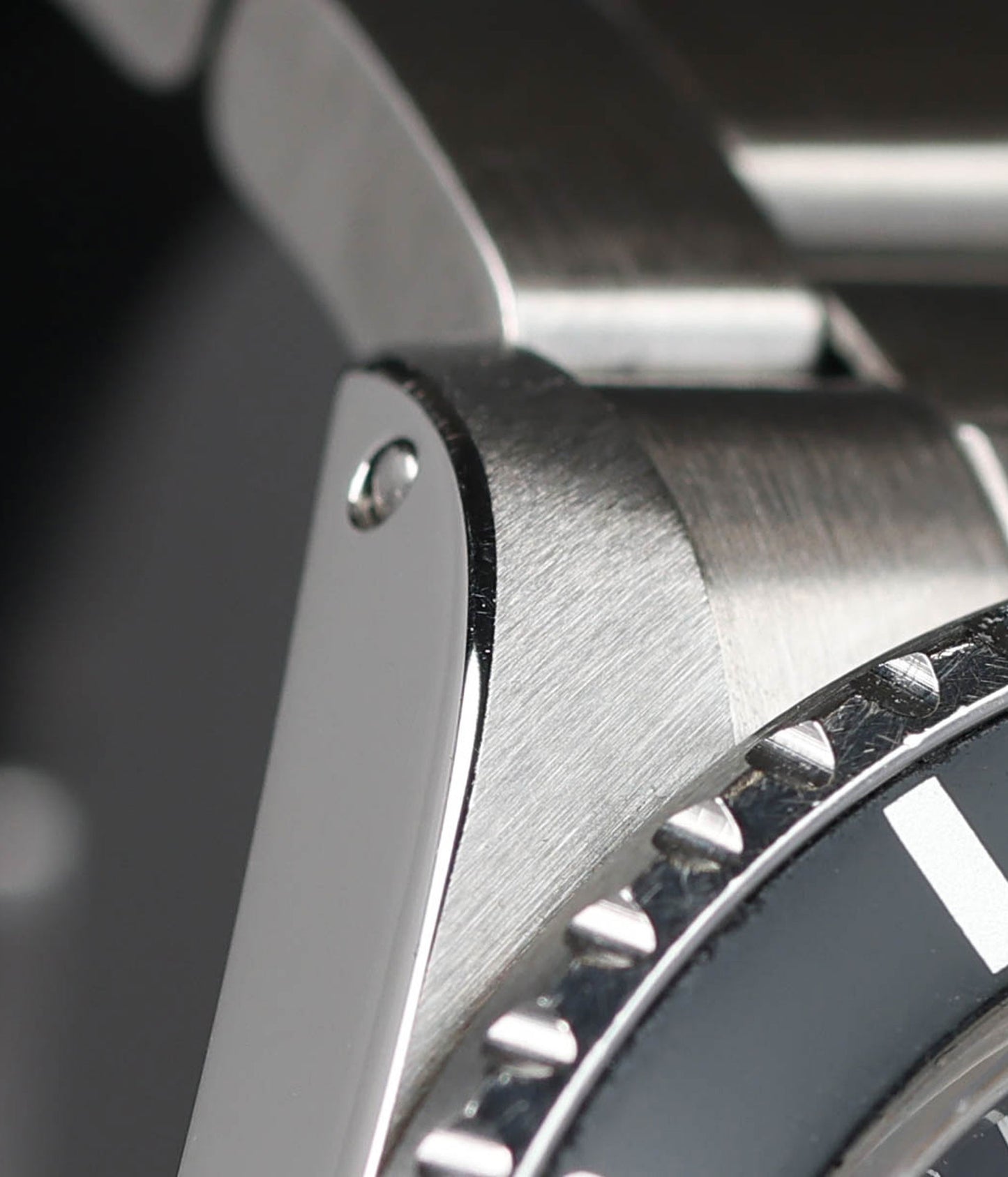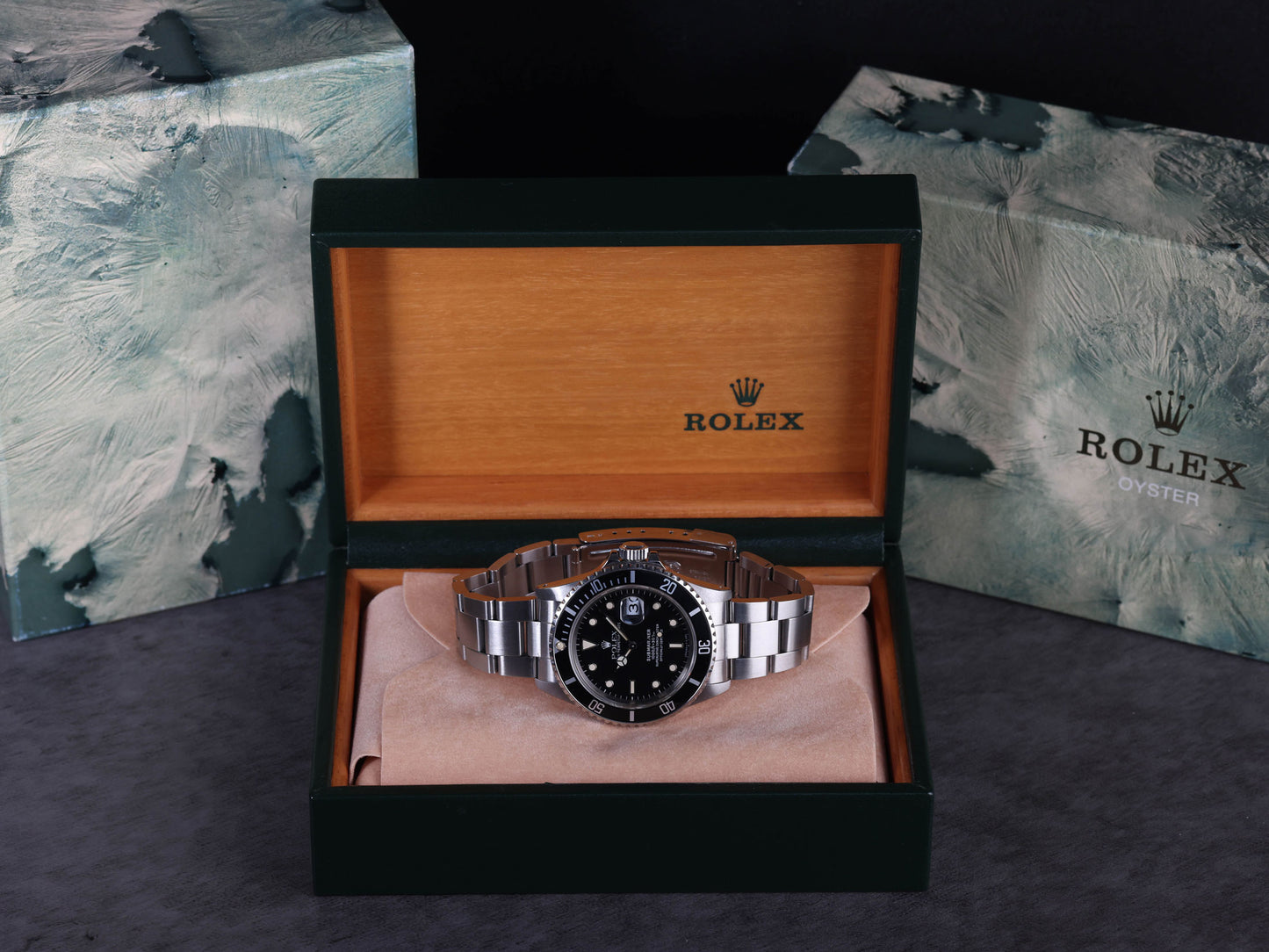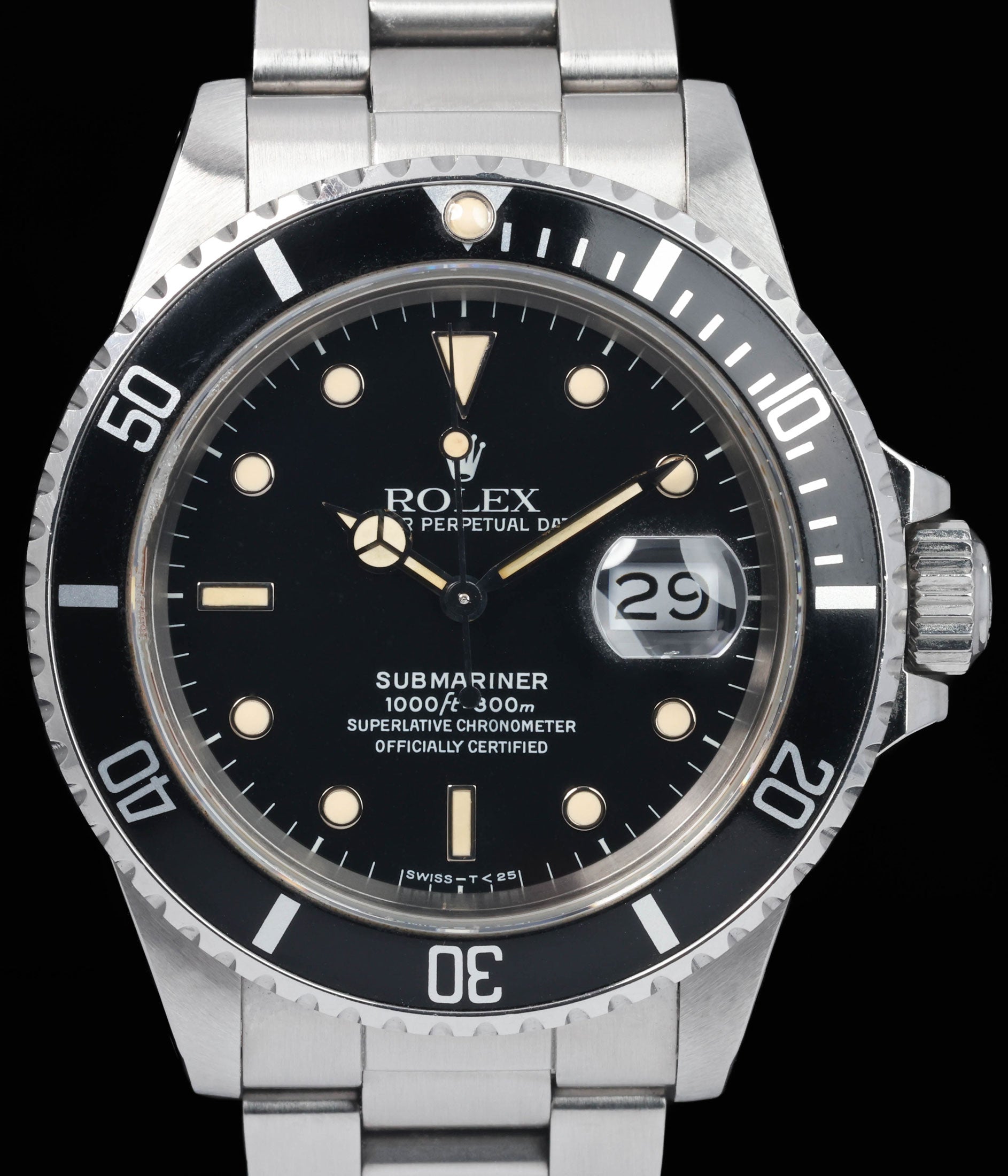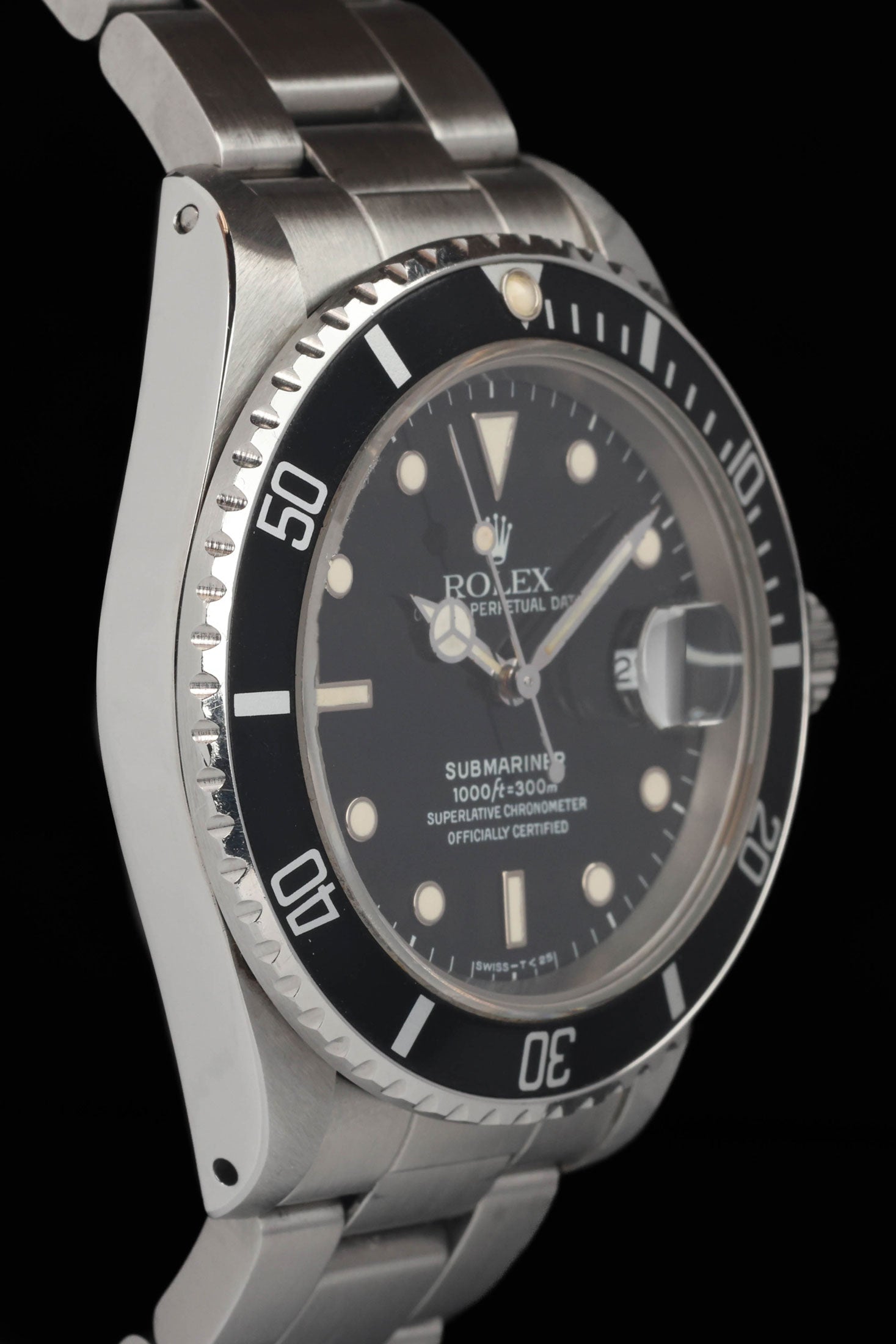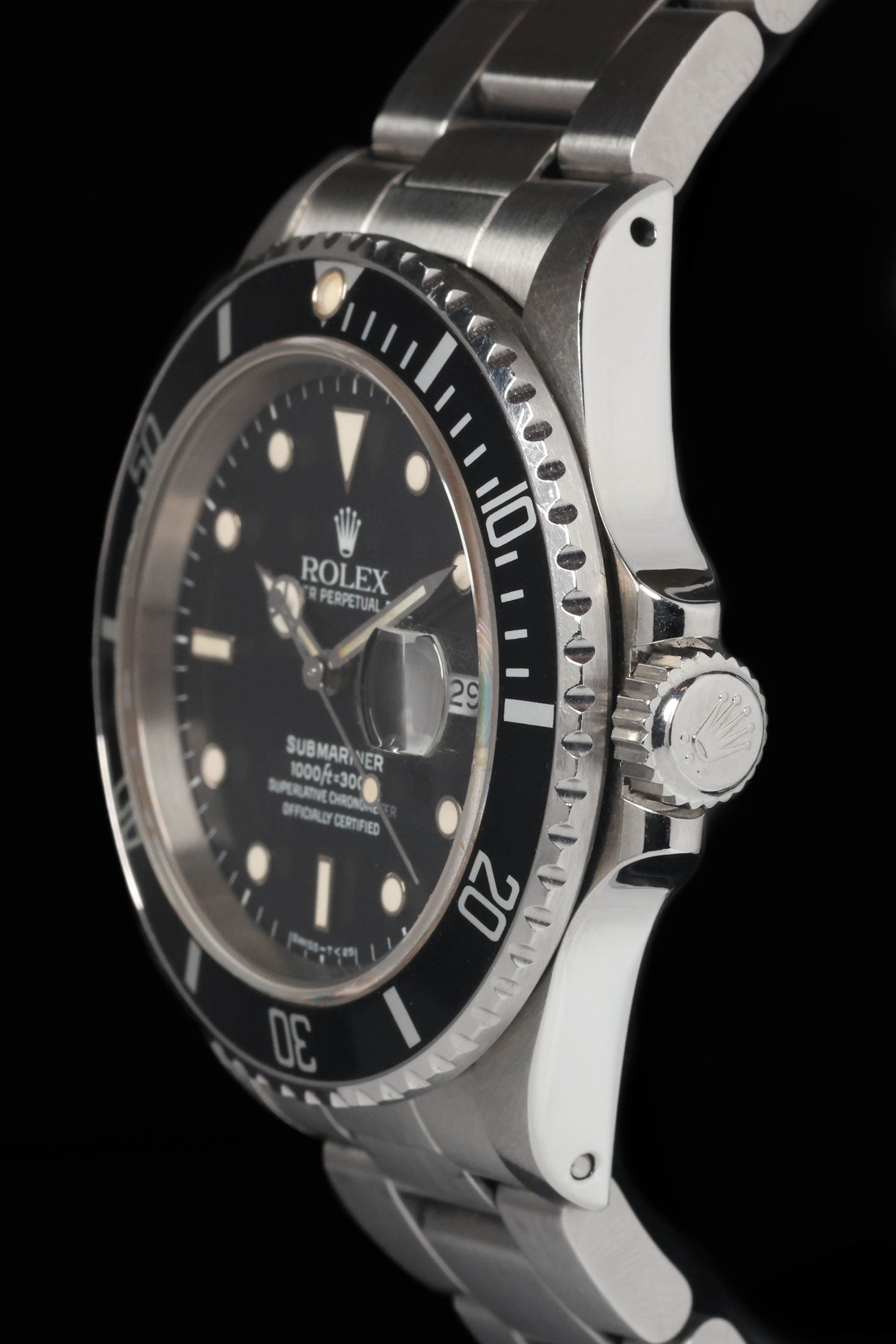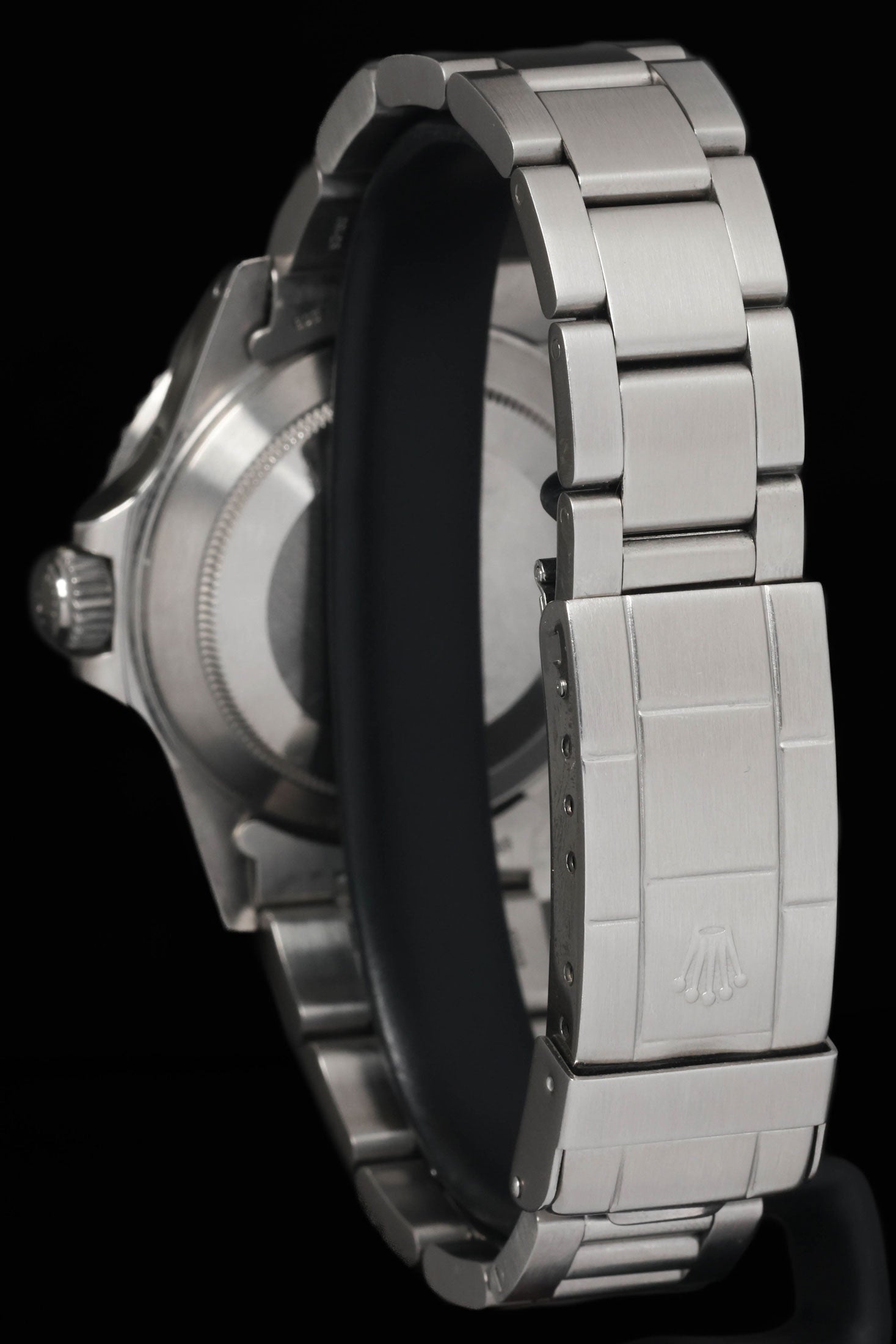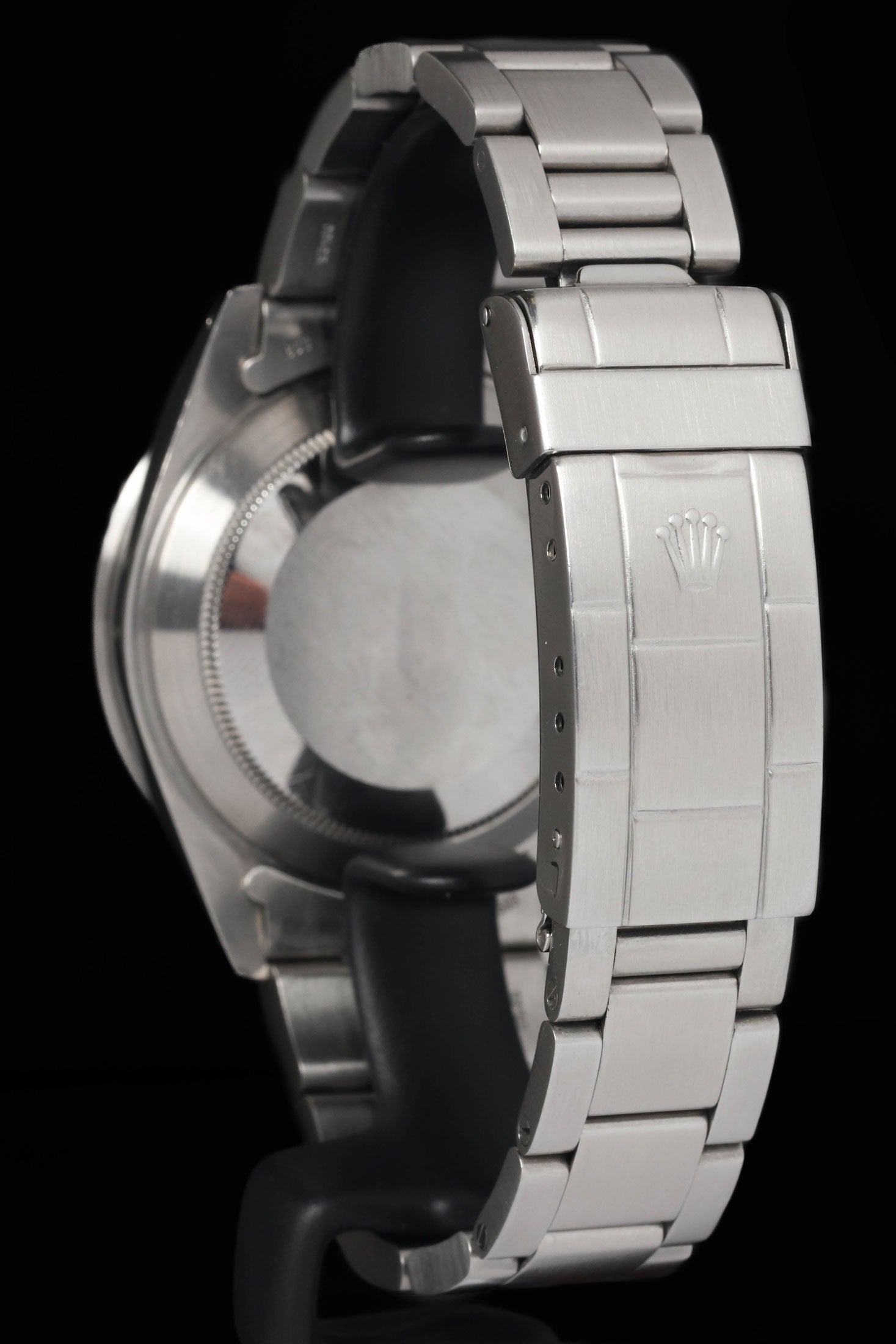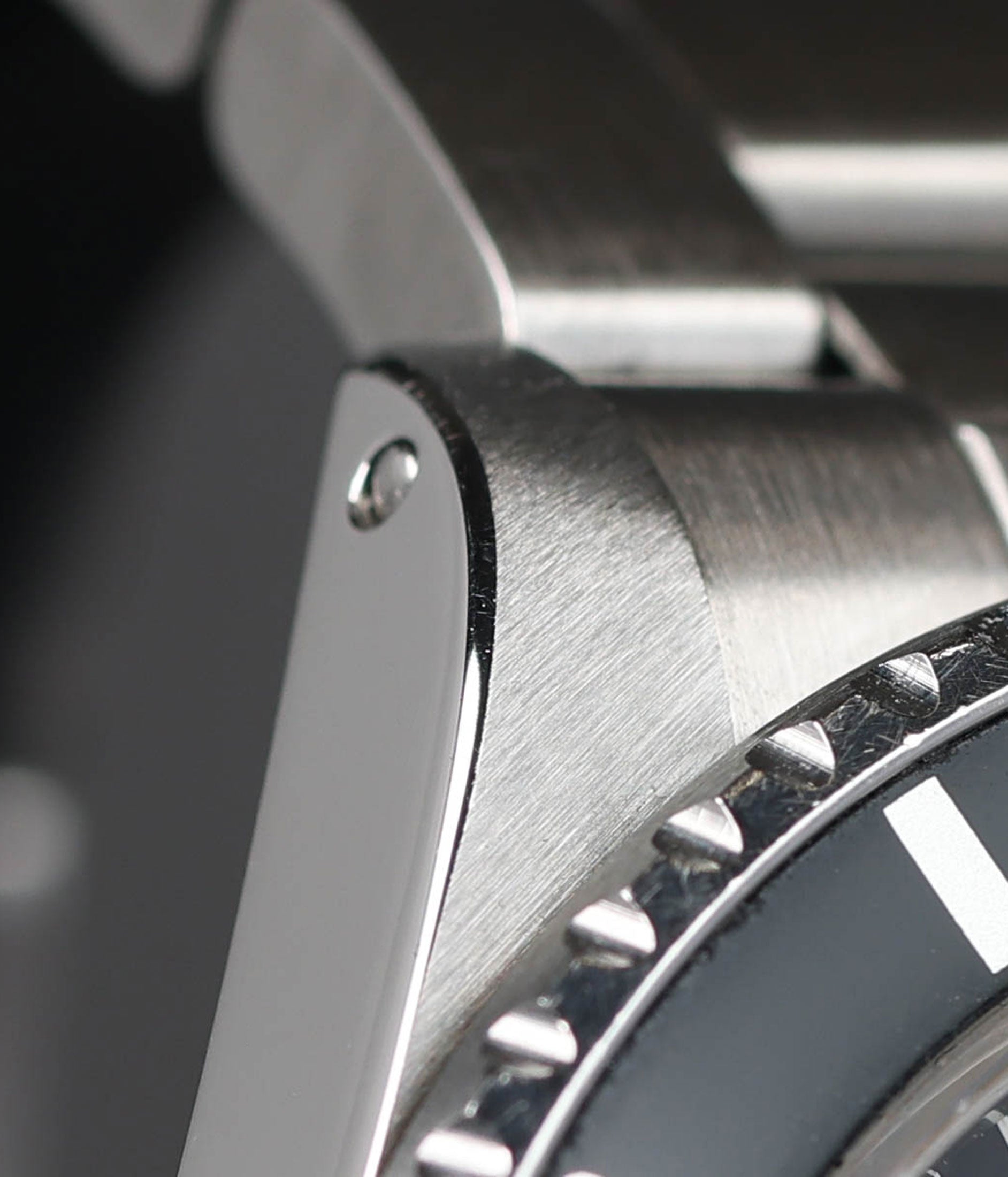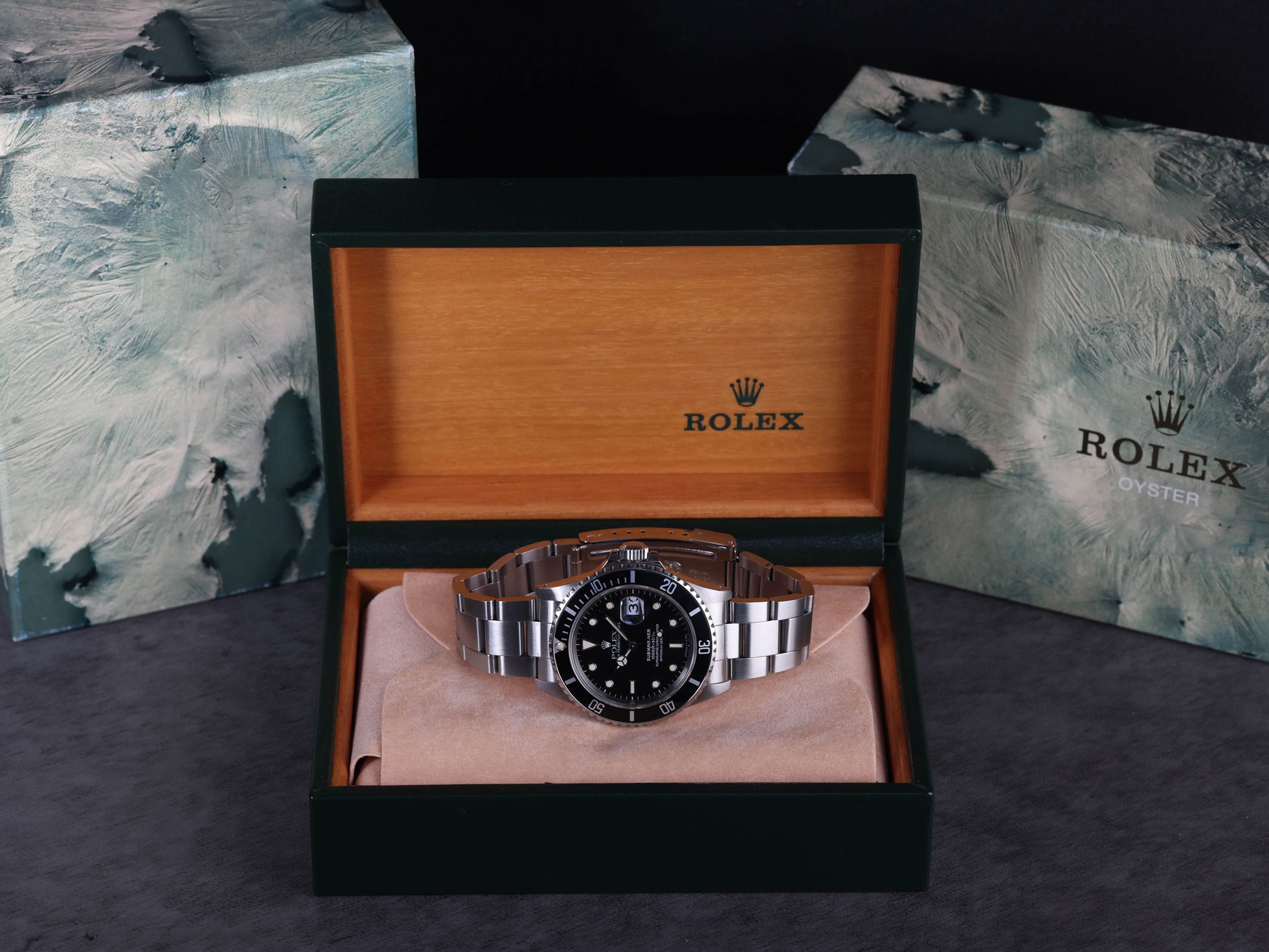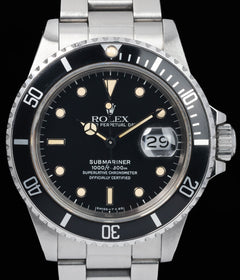Crown Vintage
Rolex Submariner Date 168000 40MM 1987 Watch & Box
Rolex Submariner Date 168000 40MM 1987 Watch & Box
Couldn't load pickup availability
Rolex Submariner Date 168000
Excellent overall condition. The case shows sharp, well-defined lugs with original factory chamfers fully intact and no noticeable wear. Hands and hour markers have developed a pleasing, even patina that complements the watch’s age. The glossy dial is beginning to shift towards a subtle matte texture, adding character without compromising legibility. No marks on case or bracelet. Crystal has chip in photo, will come with brand new crystal.
Share
Why we love this watch
Why we love this watch
Rolex Submariner 168000: a short-lived steel experiment that bridged two eras
Introduction
Rolex seldom makes hurried moves, but the reference 168000 was the brand’s fastest production pivot in the Submariner line. Built for only about nine months from mid-1987 into early 1988, the 168000 (often written “triple-zero”) sits between the long-running 16800 and its successor, the 16610. At first glance it looks identical to the 16800: 40 mm case, aluminium bezel insert, date display under a Cyclops, and matte or glossy dial options depending on when it left the factory. Under the surface, however, the watch marks Rolex’s first broad use of corrosion-resistant 904L stainless steel on a professional model—steel that later became central to the brand’s marketing. Because of its brief run and incremental but important material upgrade, the 168000 has assumed a distinct place in modern Submariner scholarship.
From 1680 to 16800 and beyond
To understand why the 168000 matters, it helps to revisit its immediate family tree. The reference 1680 (1969-1979) added a date complication to the no-date Submariner lineage. In 1979 Rolex unveiled the 16800, bringing a unidirectional bezel, sapphire crystal, quick-set date, and a depth rating doubled to 300 m—an enormous functional refresh that still defines the modern Submariner platform. The 16800 ran for most of the 1980s. By that period, corrosion issues were surfacing in harsh maritime and petrochemical environments, prompting larger industrial movements toward high-molybdenum steels. Rolex had long used a proprietary 316L alloy, but the brand’s materials engineers had begun trialling 904L, a low-carbon, high-nickel, high-chromium formulation with excellent resistance to pitting in salt-water and acidic conditions.
The transition could not happen overnight. Different cutting tools, dedicated machining parameters, and new polishing media were needed because 904L work-hardens quicker than 316L. Instead of launching a fully redesigned model, Rolex created a stop-gap: the 168000. The reference kept the calibre 3035 movement and most case geometry from the 16800 but stamped its mid-case in the new steel. Serial-number data place the production window roughly in the 9.0- to 9.4-million range, with case backs inside dated mostly “87” or early “88”. By mid-1988, Rolex committed to the new calibre 3135 and released the 16610 in 904L, retiring the triple-zero after fewer than 10,000 units.
Technical specifications
- Case: 40 mm diameter; ≈47 mm lug-to-lug; thickness ≈13 mm (including crystal). Machined from 904L stainless steel. Screw-down Triplock crown with three-dot symbol.
- Crystal: Flat sapphire with integral Cyclops lens, offering greater scratch resistance than the acrylic 1680 front.
- Bezel: 120-click unidirectional ratchet; anodised aluminium insert with tritium pearl at 0/60. Numbers are silver-painted and tend to fade grey over decades.
- Dial and hands: Early pieces carry matte tritium dials like late-production 16800s; most examples bear glossy black dials with white-gold surround hour markers filled with tritium. Mercedes handset in matching luminous paint.
- Movement: Rolex calibre 3035. 27 jewels, 28,800 vph, hacking and quick-set date. Chronometer-certified.
- Bracelet: Oyster reference 93150 or, less commonly, 93250 with dive extension and flip-lock clasp. End links stamped 593 or 593B.
- Water resistance: 300 m / 1000 ft, verified by Rolex’s high-pressure Oyster testing regime.
904L steel: why it mattered
The industrial designation for Rolex’s alloy is UNS N08904, though the brand eventually renamed its formulation “Oystersteel”. Compared with 316L, 904L contains roughly double the nickel and more chromium and molybdenum. Those elements raise the PREN (Pitting Resistance Equivalent Number), meaning better performance in chlorine-rich pools, seawater, and acidic sweat. While many high-grade dive computers and oil-rig components already used 904L, no mass-market Swiss maker had adopted it for cases at the time. Rolex’s move signalled confidence that the aesthetic and functional benefits justified higher machining costs.
Switching alloys without altering external references required Rolex to recertify case tolerances. Because 904L hardens during machining, cutting tools dull quicker, and surface polishing demands higher pressure for an equal mirror finish. The triple-zero reference served as a live trial, letting Rolex refine its processes before rolling 904L across the Submariner, Sea-Dweller, Explorer II, and eventually all Oystersteel collections.
Dial, bezel, and lume variations
Detail aficionados obsess over small production quirks:
- Matte tritium dials (Mk I) – Likely the first few thousand pieces. They retain the flat, grainy finish of late 16800 watches. White printing sometimes ages to off-white, and tritium markers can fade cream or pumpkin.
- Glossy gilt-outlined dials (Mk II) – The majority. These have a deep black lacquer and applied white-gold marker surrounds. Print is crisp white. Over time the lacquer can spider-crack (“crazing”), a feature some collectors value.
- Service dials – Post-1998 replacements use Luminova then Super-Luminova, marked “Swiss” or “Swiss Made” at six o’clock. They have brighter, green-glowing lume that can look mismatched next to original tritium hands.
Bezel inserts follow late-1980s Rolex norms. The triangle pearl is tritium-lumed and framed by an aluminium rim that corrodes quicker than steel, often losing paint. Fat-font inserts are scarce; most show thinner numerals consistent with mid-1980s supply batches.
Movement and performance
Calibre 3035 debuted in 1977, bringing a full-balance bridge, instantaneous date change, and 28,800 vph rate to the date Submariner. It shares architecture with the later 3135 but has a higher fourth-wheel pinion and different calendar train. Servicing parts remain available through Rolex Authorised Service Centres. Accuracy typically sits within −2/+2 seconds per day after fine regulation. The movement’s main weakness is the reverser wheel bearings in the automatic module, which wear if lubrication dries out—an argument for regular five-to-seven-year intervals, especially given the rising value of intact examples.
Production numbers and serial ranges
Because Rolex does not publicise figures, enthusiasts rely on case-back dates and serials. The consensus narrows production to roughly F-series (1987) 9.0–9.3 million and early R-series (1988) 9.3–9.4 million. Case backs stamped II/87, III/87, and IV/87 dominate; examples with I/88 are rare. Even at the upper limit, total output is believed to be under 10,000 units—roughly one-eighth of 16800 production and a fraction of the 16610’s 20-year run.
Market perception and price trends
For years the triple-zero traded only slightly above comparable 16800s, reflecting its near-invisible differences. That changed as collectors began valuing short-production runs and pre-Luminova tritium dials. Between 2015 and 2020, average auction hammer prices for original-dial pieces rose from about A$11,000 to A$17,000. Matte Mk I dials, full boxes, and unpolished cases command premiums of up to 40 percent. In 2024 several unpolished Mk I pieces with full sets broke the A$30,000 barrier at major European and US venues. Australian dealers note that the 168000 appeals to buyers priced out of early “red” 1680s but looking for something scarcer than a late 16610.
Pricing today depends heavily on dial condition, case thickness, matching patina between hands and hour plots, and bracelet stretch. Service-lume dials or replacement hands suppress values by 20–30 percent, though they still fetch more than a serviced 16800 because of the 904L case.
Ownership experience
Wearing a 168000 feels identical to a 16800. The lug spacing is the classic 20 mm, the case flanks retain the slim mid-1980s profile that many enthusiasts prefer to the later “super-case” silhouette, and the 3035’s higher beat rate offers smooth seconds sweep. The bracelet, with hollow links and stamped clasp blades, is rattly by modern standards but light on the wrist. Owners often upgrade to a solid-link 93150 or fit a rubber strap for day-to-day use, storing the original bracelet to preserve value.
Service is straightforward through Rolex or independent specialists. Rolex Switzerland has so far respected requests to keep tritium dials and hands, though aluminium bezel inserts are routinely replaced unless the owner specifies otherwise. Note that Rolex will no longer re-lume tritium; instead, it fits Super-Luminova service parts. To keep originality, insist on a movement-only overhaul and retain all removed parts.
Why some collectors pass
Despite its rarity, the 168000 lacks a unique design cue. Unless you open the case or look up the reference between the lugs, it is visually a late-1980s Submariner. Buyers seeking an obvious talking point may gravitate toward red-text 1680s, no-date 124060s, or ceramic-bezel 126610s. Others dislike the aluminium insert’s susceptibility to fading and scratching compared with the ceramic on modern pieces. Finally, purists who want the longest-running “modern” Submariner platform often choose a 16610 because of parts availability and a 20-year production span.
Final thoughts
The Submariner 168000 is not a radical redesign; it is a precision material update hidden inside a familiar shell. Yet that quiet shift to 904L stainless steel previewed Rolex’s modern emphasis on in-house metallurgy and raised the corrosion bar for dive-watch cases industry-wide. For collectors, the reference offers a sweet spot: all the everyday robustness of a sapphire-crystal Submariner, scarcity well beyond most five-digit models, and a direct link to the engineering priorities that shape Rolex today. Those qualities, combined with a production span shorter than a single model year, ensure that the triple-zero will remain a compelling footnote—and a worthwhile wrist companion—for many years.
Case & Bracelet
Case & Bracelet
Excellent condition. Very sharp lugs. Factory chamfers visible. No noticeable wear.
Dial & Hands
Dial & Hands
Very nice patina. Dial is beginning to turn into a matte texture.
Warranty & Condition
Warranty & Condition
Crown Vintage Watches provides a minimum 3-month mechanical warranty on pre-owned watches, from the date of purchase.
The warranty covers mechanical defects only.
The warranty does not cover damages such as scratches, finish, crystals, glass, straps (leather, fabric or rubber damage due to wear and tear), damage resulting from wear under conditions exceeding the watch manufacturer’s water resistance limitations, and damage due to physical and or accidental abuse.
Please note, water resistance is neither tested nor guaranteed.
Shipping and insurance costs for warranty returns to us must be covered by the customer. Returns must be shipped via traceable courier. Return shipment must be pre-paid and fully insured. Collect shipping will be refused. In case of loss or damages, the customer is liable.
Our Pledge
At Crown Vintage Watches, we stand by the authenticity of every product we sell. For added peace of mind, customers are welcome to have items independently authenticated at their own expense.
Condition
Due to the nature of vintage timepieces, all watches are sold as is. We will accurately describe the current condition and working order of all watches we sell to the best of our ability.
Shipping & Refund
Shipping & Refund
